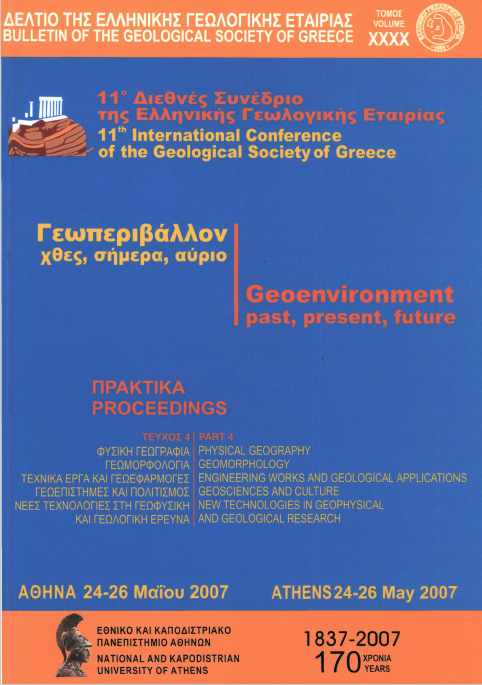The engineering geological behaviour of disturbed and weatherd gneiss in slopes. The case of the "vertical axis" of Egnatia motorway, Komotini - Nymfea, Northern Greece.

Abstract
Sound gneiss forms evidently very competent rock masses with minor problems in geotechnical works. However, poor rock masses and problematic behaviour can be encountered in engineering projects in a geological environment characterized by intensive and sequent tectonic disturbance, where, weathering may be strongly favoured. Case studies with slope instability problems are analysed from the Egnatia Motorway along the vertical axis from Komotini to Nymfea, in Northern Greece. The basic engineering geological consideration focuses on the weathering degree, the tectonic disturbance, the foliated structure and the presence of shear zones. In the paper the gneissic rock masses are categorized in a number of specific rock mass types according to key engineering geological characteristics that define the rock mass behaviour in slopes. Subsequently, the slope behaviour of each rock mass type is discussed. The geotechnical properties of such failure surfaces are very difficult to be estimated due to the heterogeneous nature of these planes and back analysis is the best method to obtain reliable parameters. Back analysis results from two case studies showed significant differences to the laboratory test results. Finally, the concepts of the appropriate support measures based on the mechanism of failure of two case studies are presented in the paper.
Article Details
- How to Cite
-
Marinos, V., & Goricki, A. (2013). The engineering geological behaviour of disturbed and weatherd gneiss in slopes. The case of the "vertical axis" of Egnatia motorway, Komotini - Nymfea, Northern Greece. Bulletin of the Geological Society of Greece, 47(4), 1749–1758. https://doi.org/10.12681/bgsg.11054
- Section
- Engineering Geology and Geotechnical Engineering

This work is licensed under a Creative Commons Attribution-NonCommercial 4.0 International License.
Authors who publish with this journal agree to the following terms:
Authors retain copyright and grant the journal right of first publication with the work simultaneously licensed under a Creative Commons Attribution Non-Commercial License that allows others to share the work with an acknowledgement of the work's authorship and initial publication in this journal.
Authors are able to enter into separate, additional contractual arrangements for the non-exclusive distribution of the journal's published version of the work (e.g. post it to an institutional repository or publish it in a book), with an acknowledgement of its initial publication in this journal. Authors are permitted and encouraged to post their work online (preferably in institutional repositories or on their website) prior to and during the submission process, as it can lead to productive exchanges, as well as earlier and greater citation of published work.




